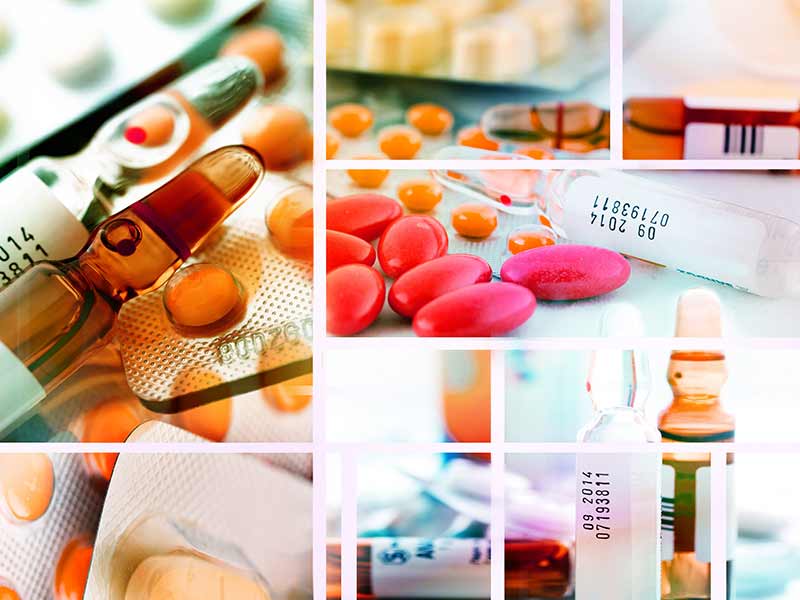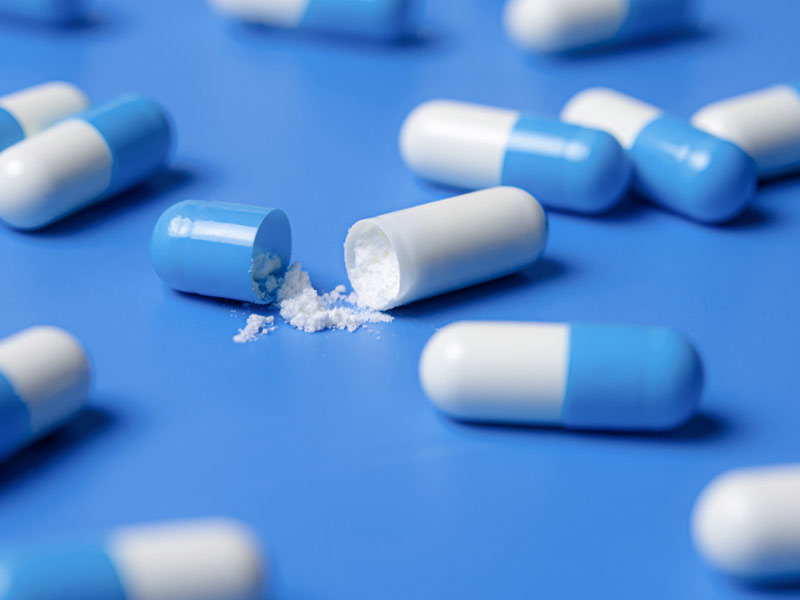Teams of experts at pharmaceutical companies have always been keen to study continuous production: what aspects of this technology are mature? What other aspects still have problems? ——The pharmaceutical industry is facing the transformation of production mode, and continuous production has gradually become a new mode of future production. Orkambi, the compound drug continuously manufactured by Vertex Pharmaceuticals, has gone through many stages since it was first approved in 2015. It is still too early to be successful in continuous production.

In The Production Of Solid Dosage Drugs, Traditional Batch Production Still Prevails
Oil, Gas, Chemicals – In these industries, continuous production has been used for decades, and productivity has been unleashed like never before. In an environment of rising raw material prices and fierce competition in the Asian market, output and efficiency determine whether a business can survive. So even their seemingly inconspicuous small increases are particularly important. By contrast, the pharmaceutical industry has long faced relatively low volumes but high profits.
The pharmaceutical industry has been hesitant to use continuous production. Immature technology, regulatory hurdles, lack of validation processes, and inability to ensure product traceability as batch-manufactured are all issues to consider.
The development trend of the pharmaceutical industry is gradually changing. Driven by the economics of production, the pharmaceutical industry will have to adopt a more economical production method for drug production. According to the Pro Generika industry association, generic drugs accounted for 77% of the drugs used globally in 2015, and the trend is increasing year by year. This is because generic drugs are less expensive than brand-name drugs. But this is on the premise of reducing the profits of top pharmaceutical companies, because they can no longer raise drug prices.
At this point, the advantages of continuous production have been fully reflected. Andreas Gottschalk, Core Technology Business Development Specialist at Glatt, explains: “Faster R&D processes with less material input is what Glatt is currently able to do. This means that pharmaceutical companies can achieve real cost savings, especially in the early stages of active pharmaceutical ingredient (API) shortages.”
Martin Maus, head of late-stage research and development for solid dosage forms at Boerhringer-Ingelheim, Germany, emphasizes: “With the help of 1:1 migration, pharmaceutical raw materials can be transferred to the start-up site faster and more efficiently.” This advantage is reflected in the company’s continuous production facilities at the Ingelheim and Biberach plants. The new process flow is equipped with smaller and more compact equipment, which saves production media, for example, air storage tanks for the preparation of solutions, and increases the output per unit of production area.
Step Over Obstacles
Whether dry granulation, wet granulation or direct compression, it can be used in continuous production equipment and systems. But for many years, pharmaceutical machinery and equipment manufacturers Gea, Glatt, Bohle and Bosch were still in their infancy. In 2015, Vertex’s compound drug Orkambi was approved by the U.S. Food and Drug Administration (FDA), becoming the first drug to be produced using continuous wet granulation. Since then, the pharmaceutical industry has found that the FDA is not sticking to the rules, but promoting new technologies. Encouraged by this success story, more and more pharmaceutical companies are stepping out of their “comfort zone”. In 2017, LLY’s Verzenio received FDA approval. This is the second drug produced using continuous direct compression
Technology Is To Promote, Not To Achieve
As early as 2016, the drug Prezista for the treatment of HIV was approved by the US approval department. Manufacturer Janssen Pharmaceutica was the first to convert batch production to continuous direct compression production. Mauricio Futran, vice president of Advanced Technology Ltd., part of Janssen Pharmaceutica, has announced a strategic decision: to achieve continuous production within eight years. Up to now, the company has built two complete continuous production system workshops, one of which is located in Biels near Antwerp.

“For some time now, people have been working on continuous production at the factory in Ingelheim, pursuing it in a pragmatic way without much hype,” Martin Maus emphasizes, “Continuous production for Boerhringer-Ingelheim is not carried out for the purpose of uninterrupted work, but for the real benefit of the product.” Currently, in the chemical and pharmaceutical R&D fields, trials are conducted in the form of partial continuous production, but the test articles in these trials all have active pharmaceutical ingredients as defined by classical chemistry. According to experts, GlaxoSmithKline also has pilot equipment. Roche and Bayer in Penzberg are also actively developing continuous fermentation and downstream processes, and the relevant leaders presented their results at the 2019 Pharmaceutical Conference of Concept Heidelberg. The most famous serial production plant in Germany is located in Freiburg and belongs to the Pfizer company. The plant opened in 2017 and features a large train station, and its core technology is the in-house developed Continuous Mixing Technology (CMT). In 2018, the company further completed the value chain with the PCMM (Portal, Continuous, Micro, Modular) system from the Freiburg plant, producing complete tablets. Pfizer’s joint development project with GlaxoSmithKline, Gea and G-CON also includes packaging units that can be installed in transportable containers and can be quickly transferred to anywhere in the world and begin rapid production.
In the fall of 2020, the pharmaceutical equipment manufacturer Bohle reported that a German generic drug manufacturer successfully accepted the continuous wet granulator of Qbcon WG and dryer (FAT) with a capacity of 25 kg/h in mid-October 2020 after completing an 11-month project.
From Active Pharmaceutical Ingredients To Finished Drugs
A team of experts, led by Markus Krumme of Novartis, is on the way. They realized that only the continuous production from active ingredients to finished drugs can create real added value. Since 2007, the team has been working with MIT to develop an “end-to-end” process. The process integrates API production and can be performed continuously, without the common intermediate step of drying the API into active ingredient powder. In recent years, a continuous production plant has been erected in Building 42 on the Novartis campus in Basel. The plant received a production license from the Swiss approval authority Swissmedic in the summer of 2017 to start producing the experimental diabetes drug LIK006. At present, LIK006 has entered the clinical research stage.
AstraZeneca’s goal is the same as that of Novartis, which is to achieve continuous production from active pharmaceutical ingredients to finished drugs.
What Has Been Achieved? What Hasn’t Worked Out Yet?
Companies like to exchange messages of success, but keep silent about failure. People usually only talk about setbacks in a small circle. Glatt expert Andreas Gottschalk explained: “Continuous production is not yet a mature technology. Pharmaceutical companies are mostly at the stage of accumulating experience and exploring the process.” Merchants entered the serial production market with the Modcos system, a step that Glatt considers a success. Head of Marketing Axel Friese talks about the well-known pharmaceutical companies that are using the Modcos system. Of course, the names of these companies are kept secret in the industry. An unnamed Chinese company purchased a multifunctional system in 2020 with a capacity of 10-30kg/h per hour, capable of producing 3 different formulations of drugs. Glatt disclosed only two technologies the company uses, wet granulation and direct compression of powder.
Andreas Gottschalk said in the report that the FAT that can be used for production has successfully completed the acceptance in mid-October 2020. He proudly said: “The system is running.” Before that, there were still many hurdles to overcome. Each active ingredient of a drug is unique, and automation technology, measurement technology and components must also be adjusted, just like the rehearsal of a band before the official stage. “It takes time for the process to run smoothly,” says Glatt’s experts. To be able to run production activities for several months, and then enter into adjustment weeks, is what pharmaceutical entrepreneurs look forward to, who only want to match production in the fields of petroleum and chemical raw materials. Ability remains the same. Andreas Gottschalk explains: “The duration of continuous production is usually 3 to 4 days, after which the line is cleaned for a week in order to prepare it for the change of products.”
Combined With Batch Production

How to ensure the traceability of continuous production has been discussed for a long time. The Food and Drug Administration provides only a few hints for manufacturers to consider in terms of product, individual batch sizes, and batch descriptions. In batch production, the batch number dominates it all. However, in continuous production there is no sub-process that ends, so there is only one possibility of discontinuation, and that is after the production of the entire batch of the drug has been completed. Martin Maus explains: “Boerhringer-Ingelheim has now successfully avoided the challenge of fully continuous production by using a ‘bin to bin’ approach. At present, the most suitable process steps for the production of products are carried out continuously, the other steps are carried out in the classic batch production way. At Boerhringer-Ingelheim, this production concept is called “continuous production with batch production”.
The original grand vision associated with the new technology, enabling real-time publishing through the integration of PAT technology, has yet to materialize. Andreas Gottschalk explains: “Currently, the traditional approval process still dominates.” Therefore, pharmaceutical companies still have a long way to go from traditional batch production to continuous production. However, in the long run, industry experts are optimistic. The industry’s acceptance of continuous production is increasing. Once the “early adopters” have successfully implemented the continuous production of pharmaceutical products, the technology will be more widely accepted by the industry in the future.










